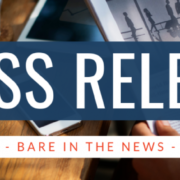Mystery Shop Insights on a Budget: How to Monitor Compliance and Improve Results with Self-Audit
Are you interested in making an impact on your operational and service results? Are you concerned that standards have fallen due to lack of corporate budget for monitoring? Do you want make a difference with a nominal investment in time and money?
There is a saying, “You cannot manage what you do not measure”. Linda Amraen, Global Director of Client Services of Hospitality at BARE International, provides an overview of the Self-Audit methodology and why deploying Self-Audit to ensure your team is performing according to standards is important in mitigation of risk and overall improvement.
Circumstances led me to travel in the pandemic time and to stay in several highly rated, branded of hotels. My 9 to 5 has me responsible for creation of programs to measure compliance so I am acutely attuned to establishing and to meeting standards. I was not prepared however, to check-in to find the room I was assigned had not been cleaned. I do not mean new protocol sanitized/cleaned, I mean overall, base change the sheets cleaned. It appears there were some obstacles operationally that put the room in as occupational when in fact this was not the case. I made the front desk aware and they handled the problem remedially, providing a new room and resolving it to my satisfaction. However, use of the Self-Audit could have proactively prevented this circumstance from occurring!
Firstly, Self-Audit identifies opportunities so action can occur limiting future risk proactively addressing internal needs. Secondarily, the placebo effect results in people’s improved performance. When you let the team know that you will be auditing regularly, they will perform better overall.
Until you measure, you don’t know if something is getting better or worse or where even to begin to take actions. You leave the company exposed should there be an issue that has significant urgency or when goes unaddressed can result in a larger problem.
In the case I’ve described, creation of a Self-Audit checklist of the housekeeping procedures to clean a room, and the further identification of the room as ready for occupancy could have mitigated the risk of a guest, myself, entering a room that was not fully ready. The risk associated with loss of brand trust and guest safety far outweigh any cost associated with plan creation and implementation.
Likely your brand has many internal measurements that are required and already in place. Some of these measures may look at cleanliness or compliance and are completed by a third-party audit company or by internal executive management. Your company may measure voice of customer and employee satisfaction by survey post visit. Perhaps there are Key Performance Measures (KPI’s) derived from hard data on strategic, operational or financial metrics that determine if benchmarks are met and how well your business aligns with competitors or your own past results. All of these measures are excellent to ensure continued improvement. So how does Self-Audit fit in?
What is Self-Audit?
Self-Audit is a way to monitor strengths and weaknesses and to identify ways to continuously improve, innovate and show progress over time. The gaps between actual and goal can be prioritized resulting from completion of monitoring to ensure that improvement is fluid, risk reduced. The beauty of Self-Audit is creation of programs can be easy to do by the location personnel. They can take their future in to their own hands.
To create your own custom audit program, first consider the WHY behind the measure.
Do you want to ensure that you can be certified by an agency? Have concern that everyone is doing things the right way, and consistently at that? Want to provide ongoing feedback in an organized manner. Have Key Performance Indicators that need to be met? Whatever your need, Self-Audit is a proven methodology with these four steps:
- Identify what metric you are trying to improve.
- Define the points that need to be monitored and what contributes to accuracy and consistency of the metric being met.
- Compile a tool to collect and organize the data.
- Actual collection, followed by synthesis of results.
Alternatively, if you are not up to doing this on your own, a third-party company can be hired to create a stand-alone program or even one that mirrors the internal audits already being done. The Self-Audit can precede internal corporate of external credentialing audit allowing for actions to be taken with improved results before the “auditor” arrives.
There are many potential benefits of the Self-Audit, and it is valuable to share with the team that these checks are occurring. Through the process of Self-Audit, knowledge can be shared to provide personal and team growth, competence and development of skills can be ensured. You’ll find those that understand protocol and procedure can help their teammates do better, high achievers mentoring under performers.
Tapping into the everyday may accentuate struggles or you may learn alternate ways to get the job done from those on the front lines. Most important, demonstration to the team that the checks, either overt or covert, are being done for their benefit and not with punitive results is critical.
Using Self-Audit
Let’s return to my travels. On day 2 of the trip I approached the front desk at check in and asked about cleaning protocol in light of the special circumstance that had me traveling since there was limited signage that mentioned anything related. This being a big topic globally, and very important to me personally, I expected otherwise. I found the attendant did not know what they did. She had to excuse herself and go to the office to ask. I received the information and found it to be acceptable, but was troubled by the fact it was not tip of her tongue.
I walked to 2 nearby competitors and asked the same question. Competitor 1 stated they do everything to protect the customer, they wash the linen and towels and use chemicals to clean. Competitor 2 stated a more inclusive list of the process mentioning the brand’s compilation of standards that they deploy.
As a potential guest, I want to feel confidence, I’d likely stay at competitor 2 in the future. I appreciated that she knew what was done, that the company had signage that illustrated what they had done proactively answering my concerns. Had the other hotels shared information convincingly, they would have gained my repeat and future business.
Let’s consider the case for Self-Audit in this circumstance.
The first step is the WHY behind your interest in monitoring. You want to learn if associates understand and are complying with new protocol.
In step two, you’ll identify the points that always need to occur and what employees should do to be 100% on their game.
Step three, is the actual list, using a simple excel to create the tick sheet of items that need to be monitored with point values for each. Should they mention that there are advanced measures in place for social distancing, that high touch point areas are cleaned with additional measures, and on. This will ensure you have an absolute upon conclusion.
Step four is to walk the floor, ask the associates questions, and record results. This methodology will allow you to gather data and to learn how the team’s actions align with requirements, what can you do to ensure your face of the brand is armed with the necessary knowledge to instill confidence in your brand and what actions to take. I realize that the associates will react differently when responding to managers, but this reinforcement of protocol will help them when working with customers.
The use the non-compliant points to create an action plan to remediate is the result of the Self-Audit. The addition of pictures to illustrate what was discovered allows for corrective action or even best practice counseling. The frequency of the checks is variable based upon need, some prior to each shift, new procedure implemented, or less frequent, annually of important but not used often.
Get The Information You Need
As you Self-Audit, you are owning the process by ensuring that you are monitoring important items ensuring confidence that when the credentialing organization arrives, the team are prepared and standards will be met.
As an employer, you are directing the team by setting the framework they are to work within. The compliance to the procedure protects your brand image and reduces risk. Sharing with the team what is being monitored and why improves overall performance. Use of the results in the team training will facilitate growth as you encourage team members to challenge themselves to work more constructively in the approved procedural method.
You can monitor compliance, remediate risk and improve results with Self-Audit. Self-Audit is a valuable tool, is easy and cost effective to implement.
Contact BARE to learn more about BARE-ify powered by Pulse and get started with Self-Audit!
Linda Amraen, Global Director of Client Services, Hospitality – BARE International









